Health Report has listed down the best stretches that one can do to help relieve lower back pain. There is a step-by-step guide on how to do the poses safely and how they can be modified so that they are easier to do.
Can Stretching Exercises Help Lower Back Pain?
- Stretching can help soothe muscle tension and relax muscles. Stretching increases blood flow to the muscles and joints, reducing stiffness(1).
- Regular stretching increases flexibility(2). Building muscle strength and flexibility keeps the back healthy and strong, preventing back pain(3).
- Stretching exercises can help reduce the risk of muscle strains(4).
This article enumerates some tips that may help individuals with lower back pain get started with stretching for pain relief.
Dealing With Lower Back Pain
Back pain in elderly is one of the primary causes of disability worldwide(5). The American Chiropractic Association reported that approximately 10 million Americans experience low back pain(6).
Typically, back pain is treated with home treatments, over-the-counter painkillers, or heat application(7).
However, in cases where back pain lasts for a few months with persistent severe pain, it is best to consult a doctor or physical therapist.
Lower back pain may be due to degenerative changes in the spine caused by aging(8). As early as 30 years old, progressive spinal aging begins, making some people more prone to back pain(9).
Back pain can also be caused by muscle or ligament strain due to repeated heavy lifting or degenerative diseases that damage the spinal column disc(10).
For people experiencing back pain, bed rest is not recommended(11). Instead, it is advisable to stay active with light, everyday activities while avoiding activities that cause more pain(12).
According to the National Health Service UK, a government-funded medical and health care service, people who remain active are likely to recover from back pain faster(13).
Physical therapy and exercises that strengthen the back and abdominal muscles, increase flexibility, and improve posture can help manage lower back pain(14). These exercises may also help reduce the risk of back pain disabilities(15).
Stretching is one of the regimens to try when recovering from back pain(16). Stretching keeps the muscles flexible, strong, and healthy(17).
Flexibility is vital for improving physical activity performance and enabling the muscles to work perfectly(18).
Individuals deciding on a stretching routine should consider targeting the back, glutes (buttocks), and abdominal muscles(19).
This may result in a more upright posture and more robust back support when walking, standing, or sitting(20).
Benefits of Lower Back Stretches
Supple and Flexible Muscles
Stretching is a vital part of the treatment plan for people with back pain(21). It helps maintain wellness and flexibility, which is essential for sustaining the joints’ range of motion(22).
Well-stretched muscles are supple and less prone to injury. Less flexible muscles and tissues inhibit joint mobility, increasing the risk of strains and sprains(23).
A 2012 study suggested that stretching exercise programs are safe and effective non-pharmacological interventions for managing low back pain(24).
In addition, regular stretching helps keep muscles lean, long, and flexible(25). Not putting too much strain on the muscles makes them healthy, which helps people with balance issues.
Lower back stretching can help with
Increased Blood Flow to the Joints
Stretching increases blood flow to the joints and muscles that help in joint stiffness(26). It soothes muscle tension and induces relaxation, which may help in reducing stress(27). It helps with lower back pain while sitting, or for people who suffer from morning back pain.
A randomized trial examined how yoga, self-care books, and conventional stretching exercises can benefit those with chronic back pain(28).
Data revealed that yoga classes or Tai Chi for seniors were more effective than a self-care book. However, traditional stretching classes were more helpful than yoga.
The study emphasized that stretching classes not only improved body function. It also reduced chronic low back pain symptoms, with benefits that lasted for several months(29).
Some of the stretching exercises done in the study included strengthening exercises, aerobic exercises, and stretching exercises(30).
According to an article published by the Ohio State Wexner Medical Center, stretching increases blood flow, boosts oxygen levels, and helps deliver nutrients to muscles(31).
Reduced Inflammation and Tissue Scarring
An animal study proposed that the mechanical input of static tissue stretch has anti-inflammatory and anti-fibrotic (prevents tissue scarring) effects(32).
Results showed that the inflammatory-induced rat model benefitted from the tissue stretch in the in vivo model (within the organism). This mitigation led to the restoration of intrastep distance and stride length(33).
The study also reported that after the tissue stretch, the mechanical sensitivity of the rat model’s back was reduced(34).
Reduced Chronic Back Pain
A group of women ages 75 to 85 years old were assessed for back pain. They were assigned to do a group-based exercise program that consisted of agility training, resistance training, and general stretching.
The results of the study suggested that all three exercise programs significantly decreased back pain and the disabilities related to it(35).
Research on the University of Miami Comprehensive Pain and Rehabilitation Center’s physical conditioning program revealed a notable reduction in the pain level of chronic back pain patients(36).
These patients reported improvements after two weeks of doing a multimodal rehabilitation program with and without systematic stretching movements(37).
The systematic stretching movement substantially enhanced chronic pain patients’ functional gains than the controlled group(38).
Generally, stretching is focused on increasing muscles’ length to promote decreased muscular tension(39).
However, even if its benefits for back pain are highly suggested, further research is still needed to validate all findings.
Stretching Exercises for Lower Back Pain Relief
There are different types of stretching exercises: static, dynamic, and ballistic. The type varies, depending on the goal or a specific outcome that a person wants to achieve.
The standard type of stretching is static stretching(40). A person holds a position with the muscle on tension until a stretching sensation is felt. It can be performed with a passive partner or alone(41).
Meanwhile, dynamic stretches can be active or ballistic. Generally, in doing active stretching, the limbs are moved through a full range of motion to the end ranges. This type of stretching may be done repeatedly(42).
Lastly, ballistic stretching involves fast, alternating movements (bouncing) during the end range of motion. This stretching type is not recommended due to the high risk of injury associated with it(43).
There are specific lower back stretching exercises and poses that can be done at home without any equipment in order to loosen a tight lower back. These stretching exercises include the following:
Child’s Pose
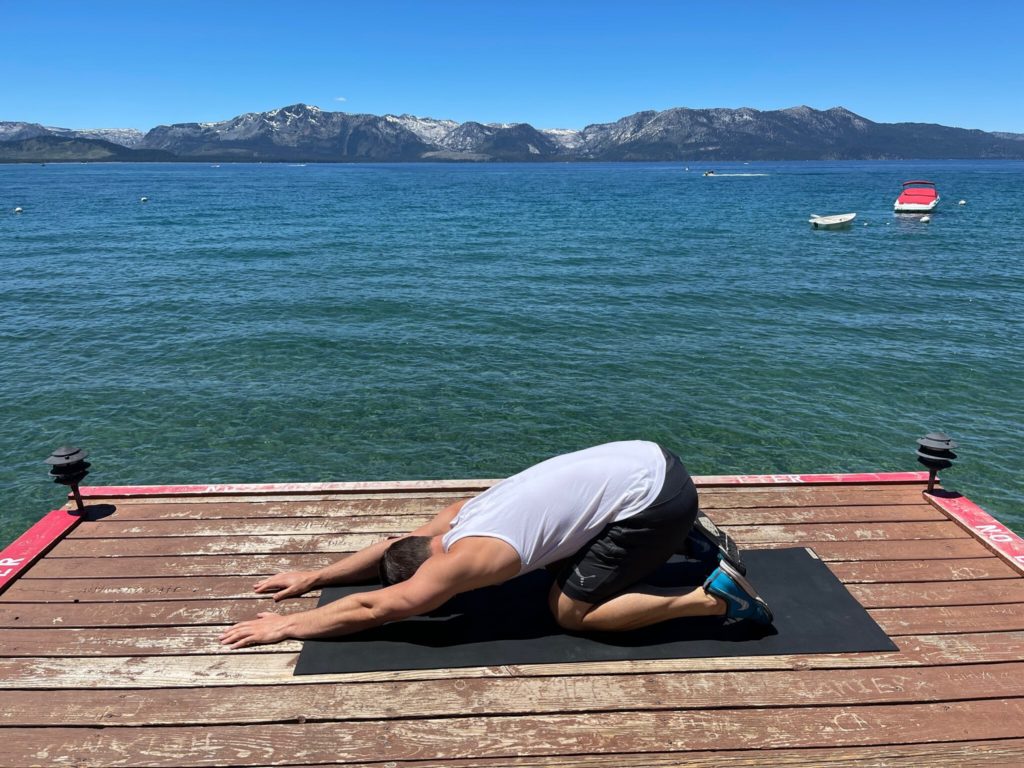
This yoga pose stretches the hip and back muscles(44). Child’s pose is done by kneeling and sitting on the knees.
In doing this pose, one should keep the buttocks seated on the knees and lean forward with both arms reaching in front as the forehead rests on the floor.
With the forehead resting on the floor, both arms should be put slowly beside the legs, with the palms facing upwards.
This position should be held for at least eight breaths while inhaling and exhaling slowly and deeply.
When this position becomes difficult, especially for older adults or those with injury, some modifications can be done.
To modify child’s pose, one can:
- Kneel and keep the knees slightly apart.
- Lean forward and fold both arms in front.
- Rest the forehead on crossed arms.
- Hold the position and breathe deeply and slowly for at least eight seconds.
Cat/Cow Pose
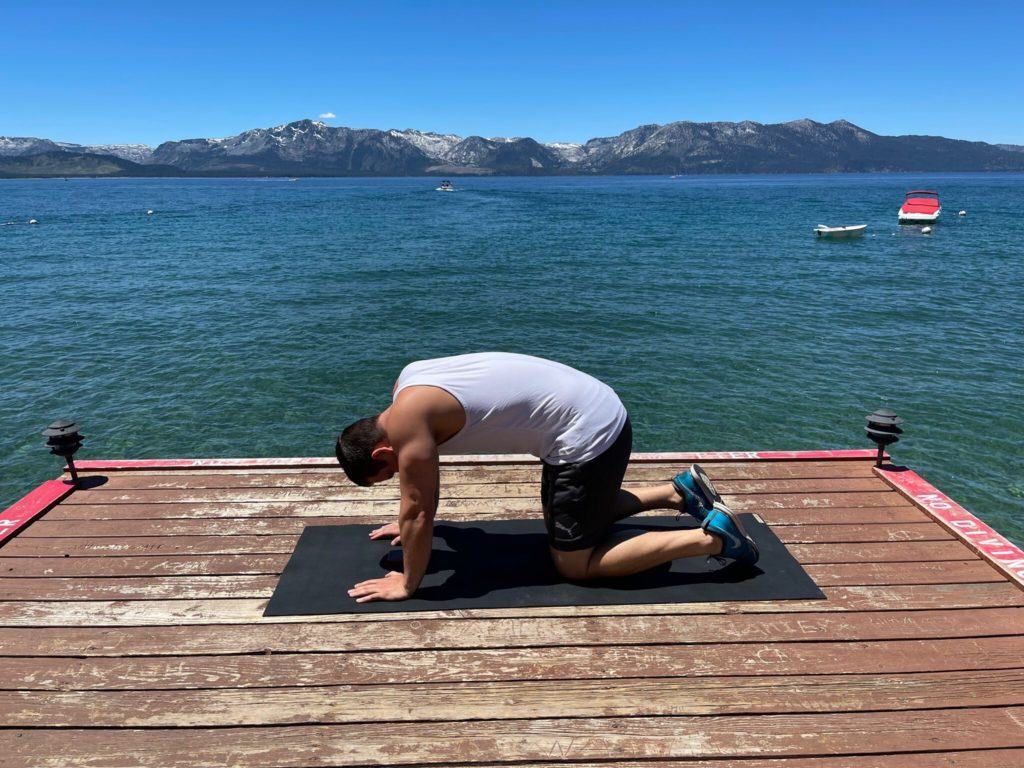
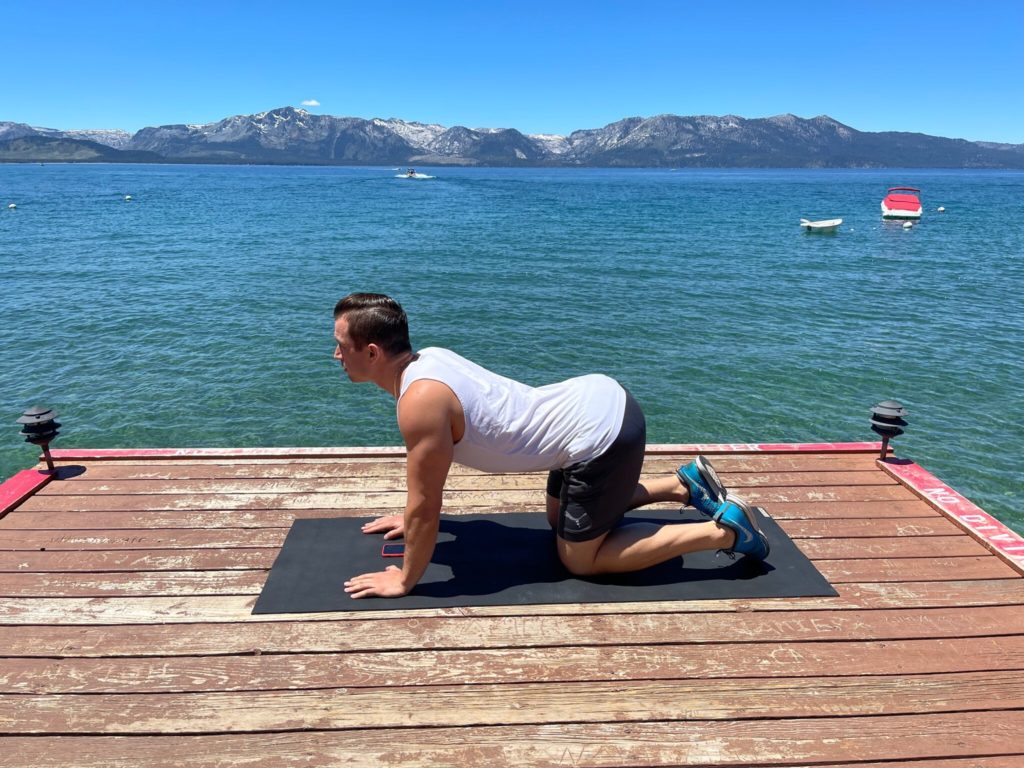
One of the benefits of cat or cow pose is that it comfortably stretches and opens the spine. This pose aims to strengthen the abdominals (core muscles) and obliques for good posture(45).
To get started on this position, one can do a tabletop position or kneel with the knees beneath the hips. Both palms should be on the floor beneath the shoulders.
While holding this position, the head should stay in a neutral position.
To do cat pose, one should:
- Push the spine up and form a hunched position.
- Tuck the pelvis under the hunch and the chin into the chest.
- Hold this position according to the preferred duration.
To do cow position, one should:
- Start in a neutral position.
- With the head slightly upwards, push the abdomen down towards the floor and push the glutes towards the ceiling.
This position should form an arch on the back portion of the body.
- Hold this pose according to the preferred duration.
Seated Spinal Twist
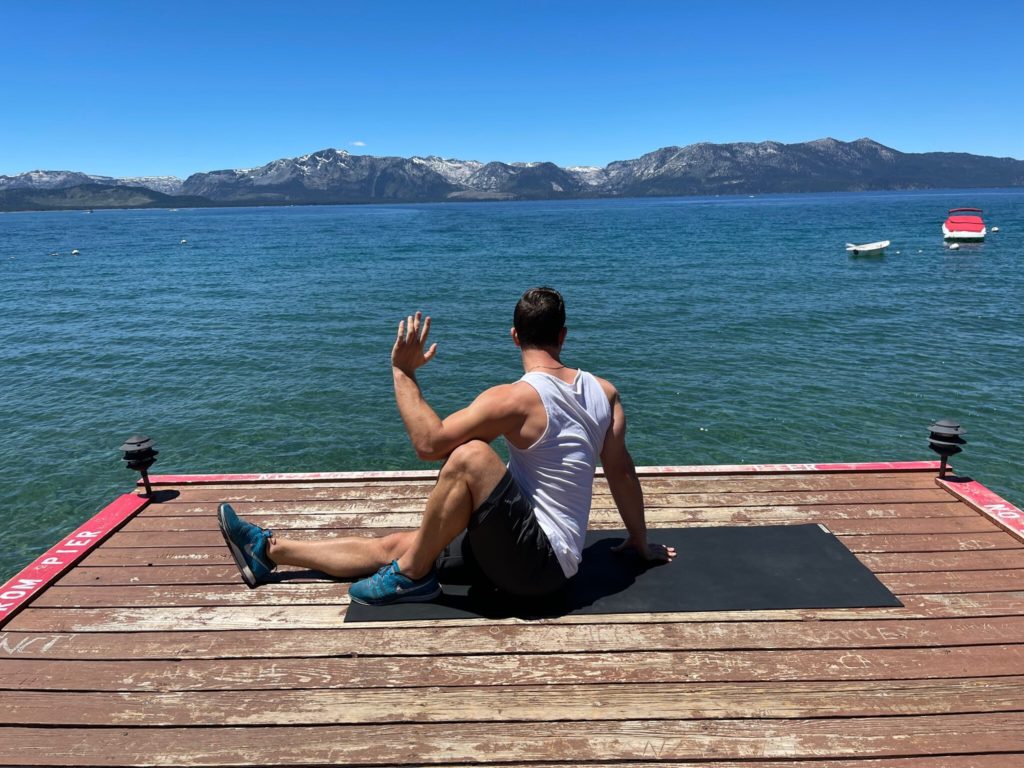
Seated spinal twist is supposed to enhance spinal flexibility(46).
To do seated spinal twist, one should:
- Start in a sitting position, with both legs stretched out in the front.
- Bend the left knee, position the left leg across the right leg, and put the left foot on the floor.
- Twist the torso to the left while moving the right arm across the body. The left arm serves as support since it is anchored to the floor.
- Press the right arm to the left leg until a comfortable stretch is felt.
- Hold this position depending on the preferred duration, and do the same with the opposite leg.
Knee-to-Chest Stretch
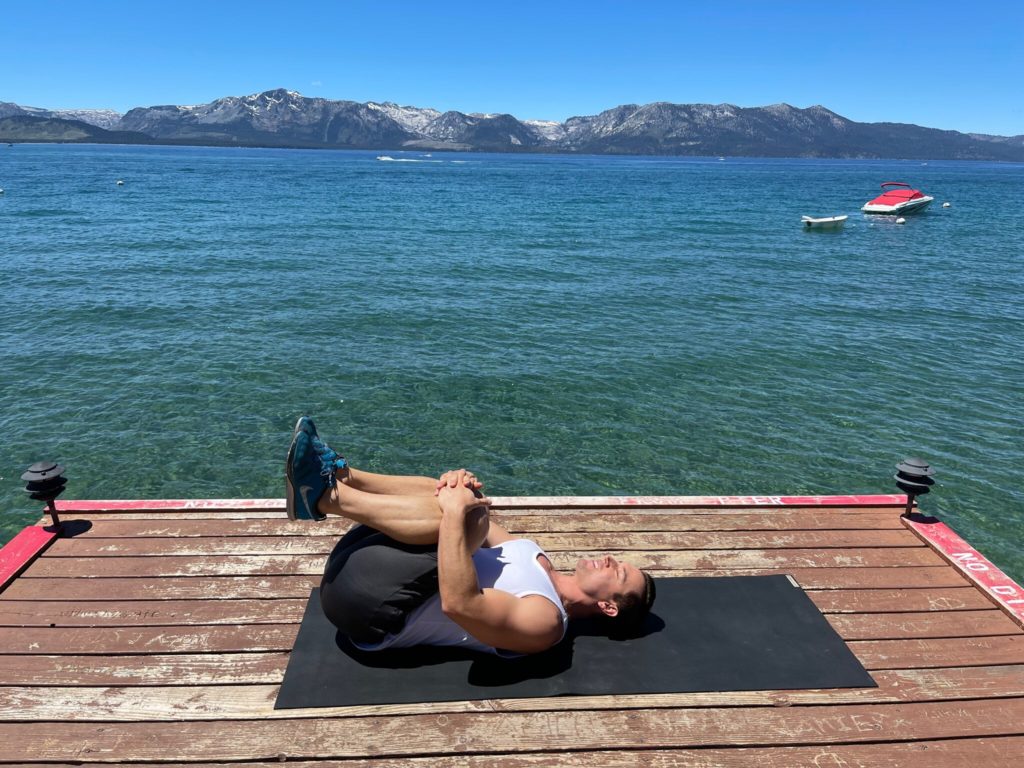
Another stretch exercise that can help improve spine flexibility is the knee-to-chest stretch.
The starting position of this stretch exercise involves lying with the back flat on the floor and then bringing the knees against the chest.
To do this pose, one should make sure that the lower back muscles and pelvis are relaxed as the knees are being pulled to the chest area.
If this is difficult, one can pull one knee at a time against the chest instead.
For example, the right knee can be pulled towards the chest first and then alternately pulled back up with the left knee.
However, if this modification is applied, the leg not being pulled should be at the starting position.
Piriformis Stretch

This stretch exercise targets the glutes, hip flexor muscles, and hamstrings. Piriformis stretches start by lying on the floor with the legs straight.
To do this simple pose, one should:
- Gently lift one leg with bent knees.
- With the opposite hand, pull the knee towards the opposite shoulder.
- Hold this stretch for at least 15 seconds.
- Do the same with the other side.
Cobra Pose
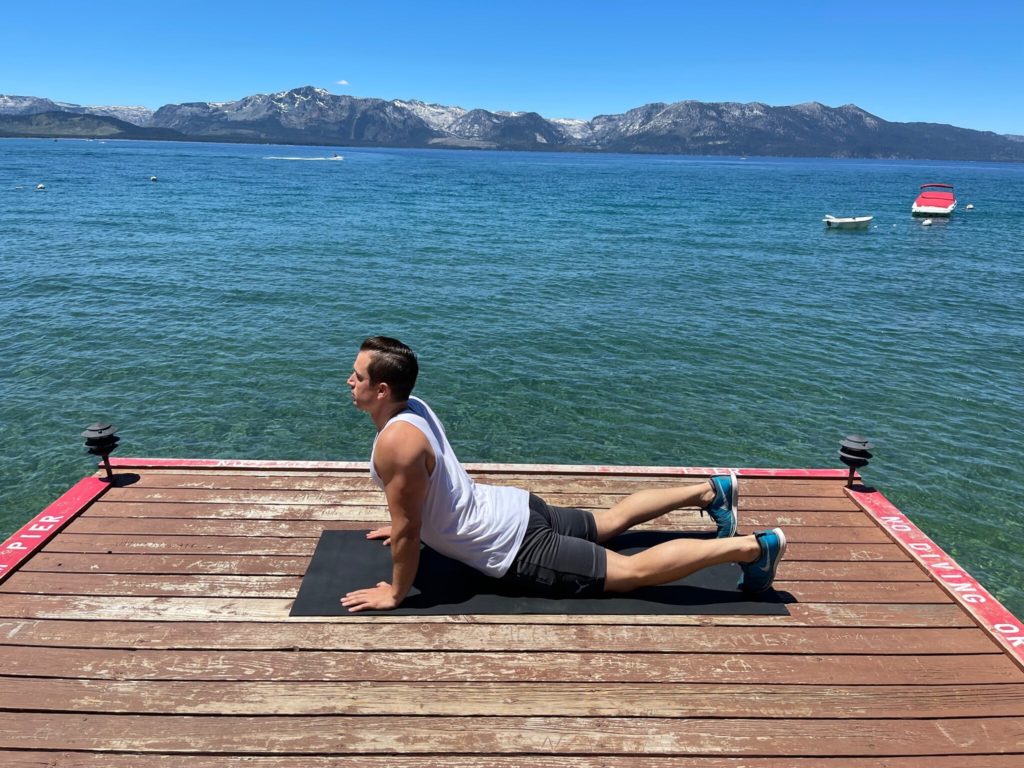
To do cobra pose, one should:
- Begin by lying down, with the belly button on the floor and the legs side by side.
- Keep hips’ width apart and the arms at the sides.
- Slowly bring the arms up and rest the elbow underneath the shoulders, with the forearms parallel to each other on the floor.
- Inhale as the chest and head are lifted off the floor, and lengthen the lower back by rolling the outer thighs slightly towards the floor.
Cobra pose can also be done standing up and facing a wall. Oftentimes, this modification is done by people who find it difficult to lie on their bellies.
The arms and palms should be pressed against the wall, parallel to the shoulders.
The torso and chest should be pushed away from the wall, and the shoulder blades are drawn to the upper back to create a slight backbend.
This pose may be held for ten breaths before exhaling and slowly releasing the chest and lower torso back to the floor.
This stretch aims to strengthen the spine and lengthens the lumbar or abdominal muscles.
Dos and Don’ts of Stretching for Lower Back Pain Relief
Here are some tips to follow in performing stretching exercises safely.
These tips aim to avoid activities that may add up to the existing back pain or injury.
What to Do When Stretching for Lower Back Pain Relief
- Do a warm-up before starting any stretching exercises. It is recommended to try light activities, like walking, to avoid painful injuries when stretching cold muscles.
- Start slowly with a gentle stretch exercise and hold each position up to 10 seconds to 30 seconds to gradually stretch the muscles.
- Improve body flexibility. Yoga or tai chi may enhance muscle and joint flexions, reducing the risk of strains and other injuries.
- Schedule a rest day. It is ideal to have a day or two to allow muscles to recover and avoid further damage that may delay healing.
What to Avoid When Stretching for Lower Back Pain Relief
There are some things that one should not do when stretching for lower back pain relief.
To avoid further pain or injury, one should:
- It is not advisable to force any stretching positions or exercise, especially if it inflicts pain. Apply modifications and alternatives to perform the stretches more easily.
- Never bounce the stretch because it shortens the muscles instead of lengthening them. Moving rapidly or bouncing may lead to injury(47).
- Do not attempt to do stretching exercises alone. The worst stretches that may contribute to lower back pain severity are done without proper guidance and caution.
- Do not forget to breathe. Proper breathing is vital to maintaining focus and preventing injury(48). Muscles need oxygen to perform.
